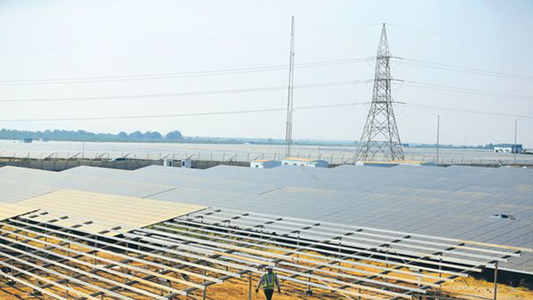NEW DELHI, JAN 18
India needs a large land footprint to meet its renewable energy targets, ranging from approximately 55,000 to 125,000 km2, or areas roughly the size of Himachal Pradesh or Chhattisgarh, respectively— according to a research by The Nature Conservancy.

The new research article, “Renewable Energy and Land Use in India: A Vision to Facilitate Sustainable Development”, published in the scientific journal, Sustainability, demonstrates that India can meet the lofty renewable energy target of 175 GW by 2022 by placing renewable energy infrastructure on already degraded lands that have a lower potential conflict.
This is a significant opportunity as our country scales up renewable energy production and may lead to faster renewable energy project implementation, lower project costs, and increased energy access.
PM pledged to increase renewable energy target to 450 GW
India has made an ambitious commitment to increase renewable energy production to 175 GW by 2022. Recently, at the UN Climate Action Summit in New York on September 23, 2019, Prime Minister Narendra Modi pledged to increase India’s renewable energy target to 450 GW to reduce India’s dependence on fossil fuel for energy and to combat climate change.
To achieve this target, one of the biggest obstacles is acquiring land for establishing infrastructure for renewable energy. Based on the scenarios we utilized, the total land footprint needed to meet the initial 2022 target is estimated to be around 55,000 to 1,25,000 km2, which is roughly equivalent to the size of Himachal Pradesh or Chhattisgarh respectively. Moreover, if renewable energy is advanced with the singular aim of maximizing resource potential, that is, harnessing energy where the sun shines the brightest and wind blows the strongest, approximately 6,700 to 11,900 km2 of forest land and 24,100 to 55,700 km2 of agricultural land could be impacted at various scales.
Wastelands offer a ray of hope
The research, conducted by The Nature Conservancy and the Centre for Study of Science, Technology, and Policy (CSTEP), demonstrates that there is an opportunity to minimize this hurdle. Developing energy projects on lands already degraded by human activities rather than placing new infrastructure within natural habitats or areas of high agricultural production would reduce the cumulative impacts on land and minimize land-use conflicts. The good news is that India’s already degraded lands have the potential to generate more than 10 times our 2022 renewable energy target.
A win-win for development and conservation
Targeting renewable energy to already degraded areas with lower potential conflicts will not only help India achieve clean energy targets but also maintain food security and protect biodiversity. Focusing development in this manner has the potential to reduce land conflicts, facilitating project timelines and reducing project cost as a result of reduced related risk. Proactively developing India’s future renewable energy projects on these lower-impact lands is a win-win for development and conservation.
Model State of Gujarat identifies land parcel on Kutch border
Incidentally, to address the issue of land availability for clean energy projects, India will set up solar and wind projects on fallow land along its international border with Pakistan, according to a top government official.
The idea was first mooted by Prime Minister Narendra Modi and will help tackle the problem of agricultural land being diverted for such projects. Accordingly, a 30km long and 20km wide parcel of land has been identified along the border in Kutch district of Gujarat and stretches along the border in Bikaner, Barmer and Jaisalmer districts of Rajasthan.












